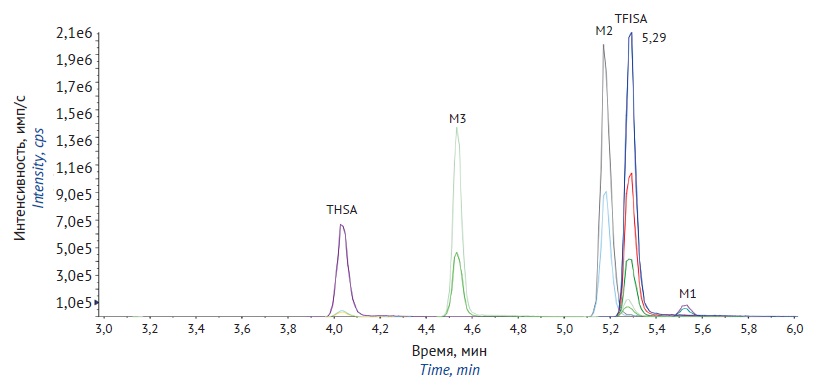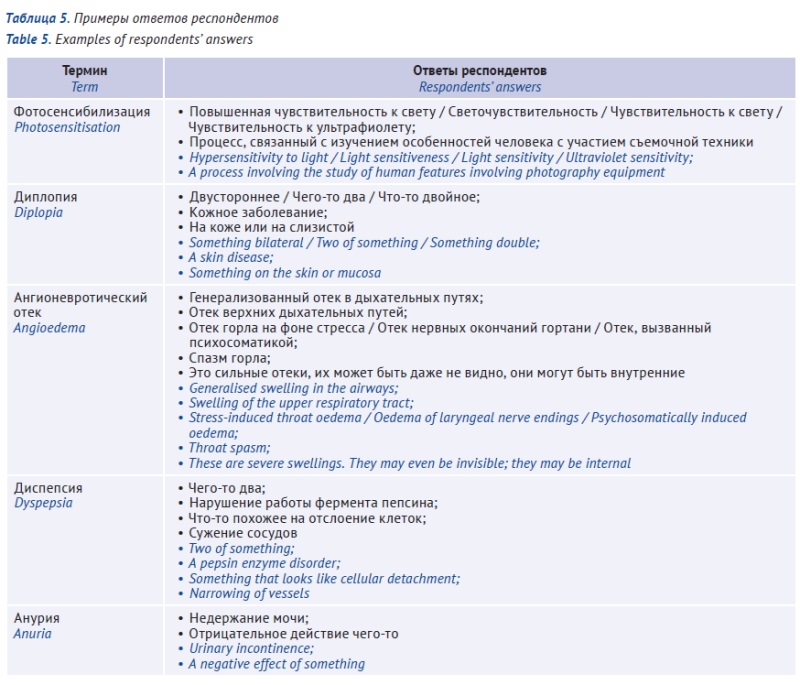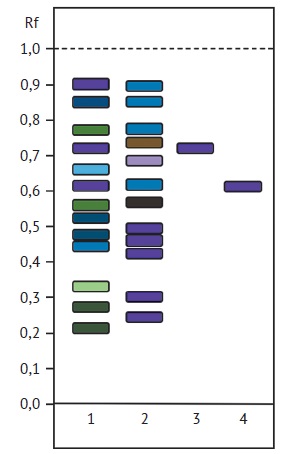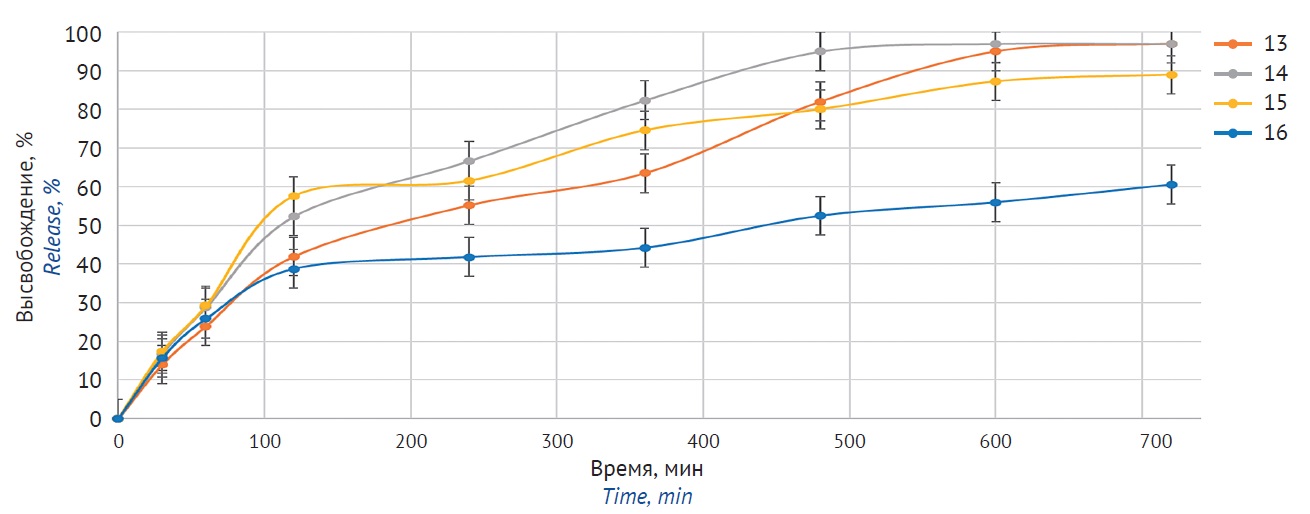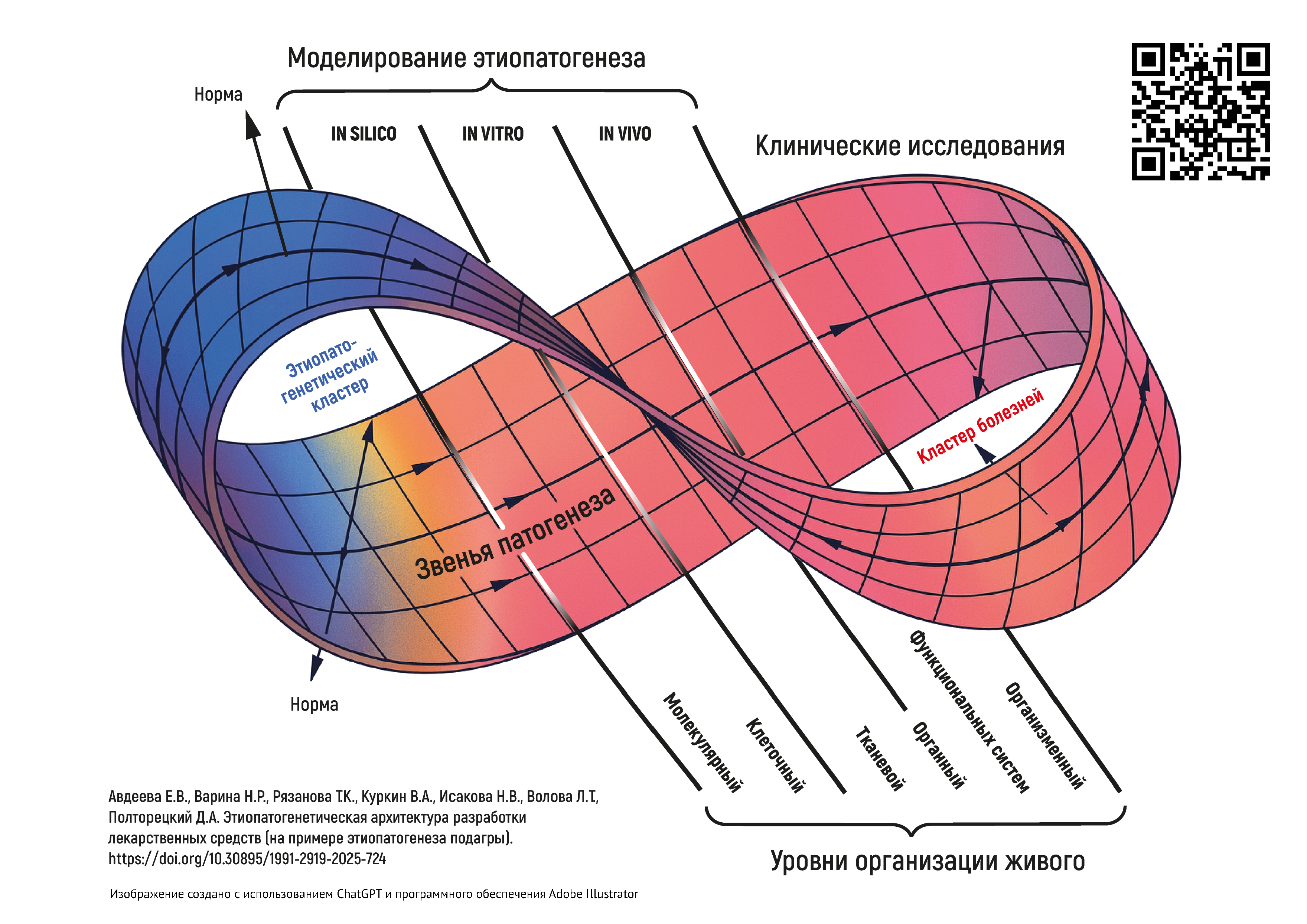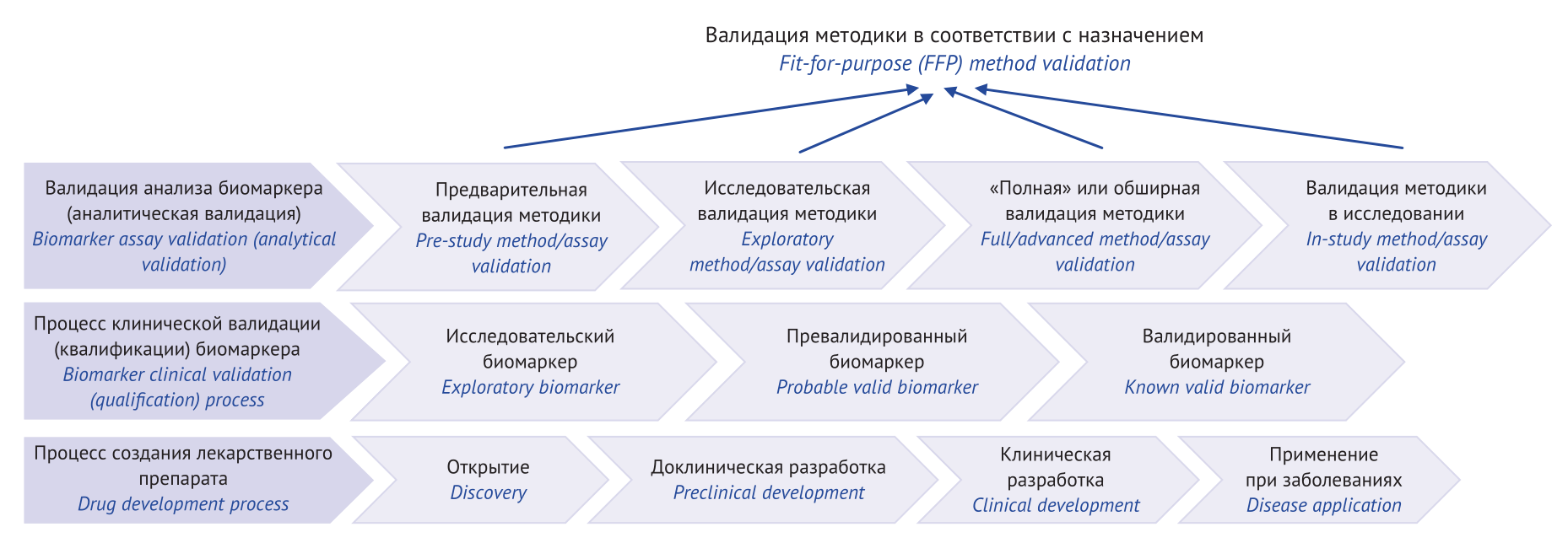ORIGINAL ARTICLES
INTRODUCTION. The administration of 5-[5-(trifluoromethyl)-1,2-oxazole-3-yl]-furan-2-sulfonamide (TFISA) into the eyes can reduce intraocular pressure. Currently, this novel selective carbonic anhydrase II inhibitor is at the preclinical research stage. The excretion of TFISA and its metabolites has not been studied yet.
AIM. This study aimed to calculate the parameters of urinary and faecal excretion of TFISA and its major metabolites in rats.
MATERIALS AND METHODS. The study was performed in 6 Wistar rats (3 males and 3 females). The rats received an instillation of 1% TFISA ophthalmic suspension in each eye at a dose of 3.7 mg/kg. Stool samples were taken prior to TFISA administration and at multiple intervals up to 360 h afterwards. Excreta were collected using metabolic cages. The study used high-performance liquid chromatography with tandem mass spectrometry (HPLC–MS/MS) to measure the concentrations of TFISA, N-acetyl-5-[5-(trifluoromethyl)-1,2-oxazole-3-yl]-furan-2-sulfonamide (M2), and N-hydroxy-5-[5-(trifluoromethyl)-1,2-oxazole-3-yl]-furan-2-sulfonamide (M1) with its degradation product 5-[5-(trifluoromethyl)-1,2-oxazole-3-yl]-furan-2-sulfonic acid (M3) in the excreta.
RESULTS. The study involved full validation of bioanalytical procedures for the determination of TFISA and its metabolites in rat excreta. The analytical ranges were 10–10,000 ng/mL for the urinary levels of TFISA, M2, and M3; 1–1,000 ng/mL for the urinary levels of M1; 10–4,000 ng/g for the faecal levels of TFISA; 5–2,000 ng/g for the faecal levels of M2 and M3; and 1–1000 ng/g for the faecal levels of M1. Out of the total amount eliminated, 45.7±2.0% of unchanged TFISA, 38.7±2.7% of TFISA in the form of M1 and its degradation product M3, and 4.0±0.6% of TFISA in the form of M2 were excreted in urine, while 8.2±1.0% of unchanged TFISA and 3.3±0.2% of the N-hydroxy metabolite M3 were excreted in faeces. TFISA elimination continued for up to 336 h after administration.
CONCLUSION. The developed and successfully validated bioanalytical procedures were used to study the excretion of TFISA and its metabolites in rats after single-dose administration of the ophthalmic TFISA suspension. According to the results, TFISA is predominantly excreted unchanged in urine. In addition, TFISA is eliminated as its N-hydroxy metabolite, which almost completely degrades to the sulfonic acid derivative during the sampling process. The N-acetyl metabolite of TFISA is minor and is exclusively excreted in urine.
INTRODUCTION. The information that is intended for a patient and included in the package leaflet for a medicinal product should ensure the effective and safe use of the medicinal product through appropriate explanations. However, the appropriate level of detail and the necessity of defining each medical term are not clear.
AIM. This study aimed to test how respondents without medical education, potentially representative of the general patient population, understand medical terms randomly selected from approved package leaflets for medicinal products authorised in the Russian Federation, as well as to conduct a statistical analysis of the relationships between the respondents’ demographics and test results.
MATERIALS AND METHODS. A Google Forms-based comprehension test evaluated the understanding of 11 random terms from approved package leaflets for medicinal products authorised in the Russian Federation. The statistical analysis of comprehension included data from 63 respondents. The study collected the respondents’ demographic characteristics, including their level of education and age.
RESULTS. The respondents overestimated their comprehension of medical terms, giving incorrect definitions to some terms that they previously deemed to be comprehensible. Overall, the respondents provided correct definitions for less than 80% of the terms tested. The most comprehensible terms were “rhinitis” (66.07%), “angioedema” (28.57%), “exanthema” (25.00%), and “anuria” (25.00%). Those who had a higher education or worked with documents were more likely to define the terms correctly.
CONCLUSIONS. Package leaflets containing medical terms, regardless of how frequently these terms are used outside of healthcare settings, should be designed taking into account the heterogeneity of the target audience due to, among other things, differences in education. The terms that cause the greatest difficulty in user testing should be further explained or replaced with more understandable synonyms.
INTRODUCTION. Red-stem buckwheat (Fagopyrum rubricaulis, Polygonaceae family) is characterised by a high content of flavonoids, primarily rutin. The aerial parts of the plant also contain quercetin, isoquercetin, orientin, vitexin, isoorientin, and other compounds. F. rubricaulis has antioxidant, cardioprotective, hypoglycaemic, and antibacterial pharmacological effects, which are attributed to the complex of flavonoids in the plant. Therefore, F. rubricaulis herb can be standardised using the content of total flavonoids. However, Russian publications lack information on the standardisation of F. rubricaulis herbal drugs. This motivates the development of an analytical procedure for the quantitative determination of flavonoids in F. rubricaulis.
AIM. This study aimed to develop and validate an analytical procedure for the quantitative determination of flavonoids in F. rubricaulis herb by spectrophotometry.
MATERIALS AND METHODS. The study involved extracting F. rubricaulis herb samples using several extraction solvents (purified water and 40%, 70%, and 95% ethanol). The presence of flavonoids in the herbal drug was confirmed by thin-layer chromatography (TLC). The content of flavonoids in F. rubricaulis herb was determined using a spectrophotometric procedure based on measuring the absorbance of the test solution in the presence of aluminium chloride. The analytical procedure was validated according to the State Pharmacopoeia of the Russian Federation (edition XV).
RESULTS. The TLC identification confirmed that the F. rubricaulis herb hydroalcoholic extracts contained flavonoids. The analytical procedure for the quantitative determination of flavonoids by differential spectrophotometry involved preliminary single-step hydroalcoholic extraction (herbal drug sample size: 1 g, accurately weighed; fragment size: ≤2 mm; extraction solvent: 40% ethanol; sample-to-solvent ratio: 1:25; extraction time: 30 minutes). The absorption maxima of the complexes of flavonoids with aluminium chloride were at 410 nm, which corresponded to the absorption maximum of the rutin standard solution. The content of total flavonoids was expressed as rutin. The analytical procedure was validated for specificity, linearity, repeatability, and intermediate precision. The developed analytical procedure was used to test 4 samples of F. rubricaulis herb manufactured by Parafarm LLC. The content of total flavonoids (expressed as rutin) ranged from 9.15±0.20% to 9.55±0.11%.
CONCLUSIONS. This study developed and validated a spectrophotometric analytical procedure for the quantitative determination of the content of total flavonoids (expressed as rutin), which can be used to standardise F. rubricaulis herbal drugs.
INTRODUCTION. Drugs based on rhizomes with roots of valerian (Valeriana officinalis L., family Valerianaceae) have sedative, antiarrhythmic, antispasmodic, anticonvulsant, anxiolytic effects and are widely used in psychoemotional and cognitive disorders, for the treatment of dysfunctions of the autonomic nervous system, including children, also for menopausal disorders. Biologically active compounds are contained not only in the underground, but also in the aboveground organs of the plant. This indicates the expediency of studying the qualitative chemical composition of valerian officinalis leaves to assess the possibility of use in medicine, subsequent standardization and the development of new phytopreparations based on them.
AIM. Comparative phytochemical analysis of biologically active substances of leaves and rhizomes with roots of Valeriana officinalis by thin-layer chromatography.
MATERIALS AND METHODS. Objects of research: leaves and rhizomes with roots of valerian harvested in various districts of the Minsk region of the Republic of Belarus in August 2023, dried by air-shade drying, ground to a coarse powder. The method of thin-layer chromatography on plates with a layer of silica gel (Sorbfil PTX-AF-A) was used to detect flavonoids and phenolic carboxylic acids. Chromatography was performed in the following mobile phases: ethyl acetate — formic acid anhydrous — water (8:1:1 and 10:2:3), acetic acid 2 and 15%; 0.020% solutions of rutin, quercetin, chlorogenic acid, and caffeic acid in 96% ethanol were used as comparison solutions. To detect sesquiterpene acids, chromatography was performed on plates with a layer of silica gel (Merck TLC Silica gel 60 F254) in the following mobile phases: glacial acetic acid — ethyl acetate — cyclohexane (2:38:60), ethyl acetate — hexane (10:90), acetone — hexane (1:2), hexane — ethyl acetate-glacial acetic acid (65:35:0.5). 0.025% solutions of valerenic acid and acetoxyvaleric acid in 96% ethanol were used as comparison solutions.
RESULTS. The conditions of thin-layer chromatography have been selected to separate and identify the chemical components of leaves of Valeriana officinalis, as well as a comparative analysis with biologically active substances of rhizomes with roots of V. officinalis. It was revealed that the leaves of V. officinalis contain flavonoids, tannins and saponins, rhizomes with roots contain phenolic compounds, mainly tannins. The best separation of flavonoids and phenolic carboxylic acids was achieved in the solvent system formic acid anhydrous — water — ethyl acetate (1:1:8). It was found that extracts from the leaves of V. officinalis contain rutin and chlorogenic acid, do not contain quercetin and caffeic acid. The optimal mobile phase for the separation of sesquiterpenic acids from valerian leaf is the glacial acetic acid — ethyl acetate — cyclohexane (2:38:60) system.
CONCLUSIONS. It has been established that alcoholic extracts of rhizomes with roots and leaves of valerian have a similar qualitative composition of flavonoids, phenolic carboxylic and sesquiterpenic acids. Rutin, chlorogenic, valerenic, and acetoxyvaleric acids were found in all samples. Thus, V. officinalis leaves can serve as a source of flavonoids, phenolic carboxylic and sesquiterpenic acids.
INTRODUCTION. Ethylthiobenzimidazole fumarate (ETBIF) is a new actoprotector and adaptogenic active pharmaceutical ingredient (API). ETBIF was found to be effective given in short intervals; side effects related to ETBIF stomach solubility are known. Therefore, it is essential to develop a matrix dosage form with a specific release profile that can neutralize these side effects, prolong dosing intervals, and increase treatment compliance.
AIM. This study aimed to develop composition and production technology of ETBIF matrix tablets in accordance with a specified release profile (total release within 12 hours; not more than 50% of ETBIF released in acidic environment within the first two hours; the rest evenly released over the next 10 hours in the intestine-simulating environment).
MATERIALS AND METHODS. The study examined ETBIF (API) as well as hydroxypropylmethylcellulose (hypromellose) and ethyl cellulose-based matrix ETBIF tablets. Mechanical properties of the tablets were examined, in particular hardness and friability. ETBIF release profiles were studied in different phosphate buffer solutions (pH 1.2, 4.5, and 6.8) using a dissolution tester and UV spectrometry.
RESULTS. The authors studied ETBIF release kinetics from matrix systems with various matrix-forming components of different origin. Hypromellose-based compounds enabled prolonged ETBIF release (90% after 12 h). Ethyl cellulose compounds showed 60 to 90% release, with API mostly releasing in acidic environment.
Adding an acid does not affect ETBIF release from matrix tablets.
CONCLUSIONS. A composition of matrix tablets has been developed that meets the specified release profile. Hypromellose-based tablets showed the most complete and uniform release of the substance in an environment simulating gastrointestinal tract. Adding an acid does not affect ETBIF release from matrix tablets, despite its increased solubility in the acidic environment.
REVIEW
INTRODUCTION. A holistic understanding of the physiological and biochemical pathways involved in pathogenesis is needed both for doctors diagnosing and treating patients and for drug developers. The accumulated knowledge in medicine and related fields, combined with the rapid development of digital tools, enables simulating the response systems of the body under normal and pathological conditions at a qualitatively new level. Being able to perform such simulations will lead to creating a digital architecture of body conditions, with interconnected links in the chain of pathogenesis being the focal points for researchers advancing medicines from early development to clinical trials.
AIM. This study aimed to review existing approaches that could form a foundation for constructing an aetiopathogenetic architecture of pathological conditions and diseases that would serve as a framework for targeted drug development.
DISCUSSION. Using gout as a case study, the authors demonstrated the necessity and possibility of developing a three-dimensional aetiopathogenetic architecture of pathological conditions and diseases that would be based on the hierarchical relationships of pathological processes at different biological organisation levels. The study identified key applications for the aetiopathogenetic architecture. In medicine, the aetiopathogenetic architecture could be used in data-driven individual diagnostics and personalised pharmacotherapy. In pharmaceutics, the aetiopathogenetic architecture could provide a platform for investigating pharmacodynamics, from screening candidate compounds to applying targeted and multitargeted approaches in pharmaceutical development. The authors used the aetiopathogenetic architecture of gout as a case study to discuss the logic behind designing studies of medicines.
CONCLUSIONS. The article proposes a methodology for constructing an aetiopathogenetic architecture reflecting cause-and-effect relationships of different significance to the development of pathological conditions and diseases. The aetiopathogenetic approach should become an integrative framework for all stages of the development and use of novel medicines, as well as a basis for expanding the indications for existing medicines. New opportunities are arising for the development of aetiopathogenetic models of varying complexity that can be used in projects ranging from drug design at the molecular level to pathophysiological modelling at the organismal level.
INTRODUCTION. Biomarkers are used to assess normal physiological processes in the body; to diagnose and select therapy for various diseases; and to develop new drugs. The increasing use of biomarkers as drug development tools necessitates improvements in analytical quantification methods.
AIM. This study aimed to review and summarise data on validation of bioanalytical methods for biomarker quantification.
DISCUSSION. The analysed regulatory documents were issued by International Council for Harmonisation (ICH), as well as Food and Drug Administration (FDA), including the Biomarker Assay Collaborative Evidential Considerations Writing Group and Critical Path Institute (C-Path); European Medical Agency (EMA); Eurasian Economic Commission (EEC); and other publicly available research platforms (including PubMed, Web of Science, RSCI (eLIBRARY.RU), and Google Scholar online databases) primarily published in 2014–2024. Analytical and clinical biomarker validation was examined, alongside with analytical validation stages and key validation parameters of the bioanalytical method depending on the objective (analysis for pharmacokinetics, bioequivalence, and toxicokinetics studies; biomarker analysis in drug development and for diagnosis in preclinical and clinical studies). Proposed is an algorithm for choosing biomarker analytical validation level depending on the method (chromatography, ligand-binding methods using reagent kits for various purposes) and the issues to be addressed.
CONCLUSIONS. Confirming biomarker method suitability as per the objectives is similar to a common validation procedure of bioanalytical methods. A broad and detailed scientific discussion of biomarker analysis validation is needed, since a comprehensive scheme developed for this complex procedure will contribute to more reliable use of biomarkers, improved quality of studies within this process, and resulting safe and effective new medicinal products.
ISSN 3034-3453 (Online)



